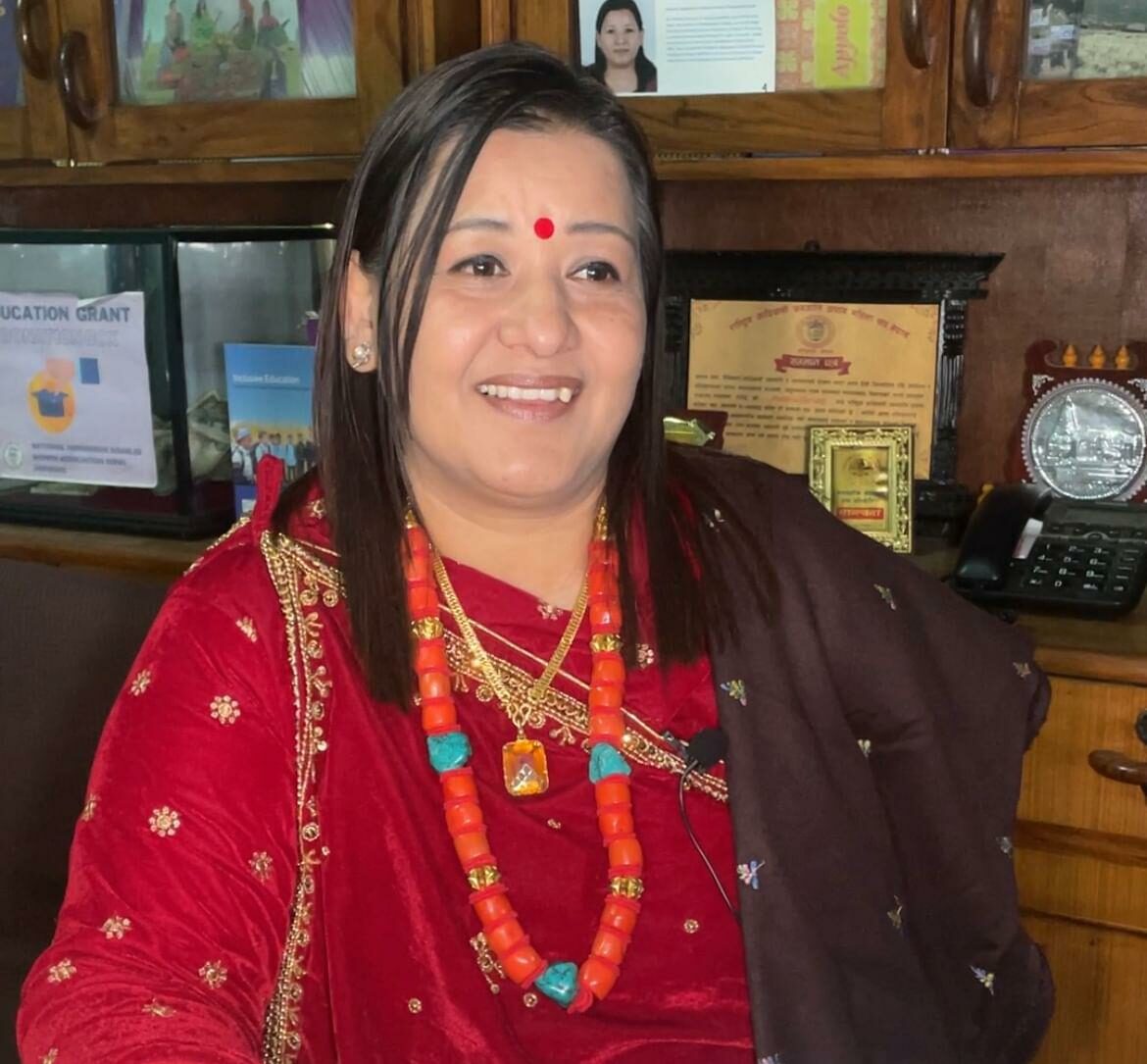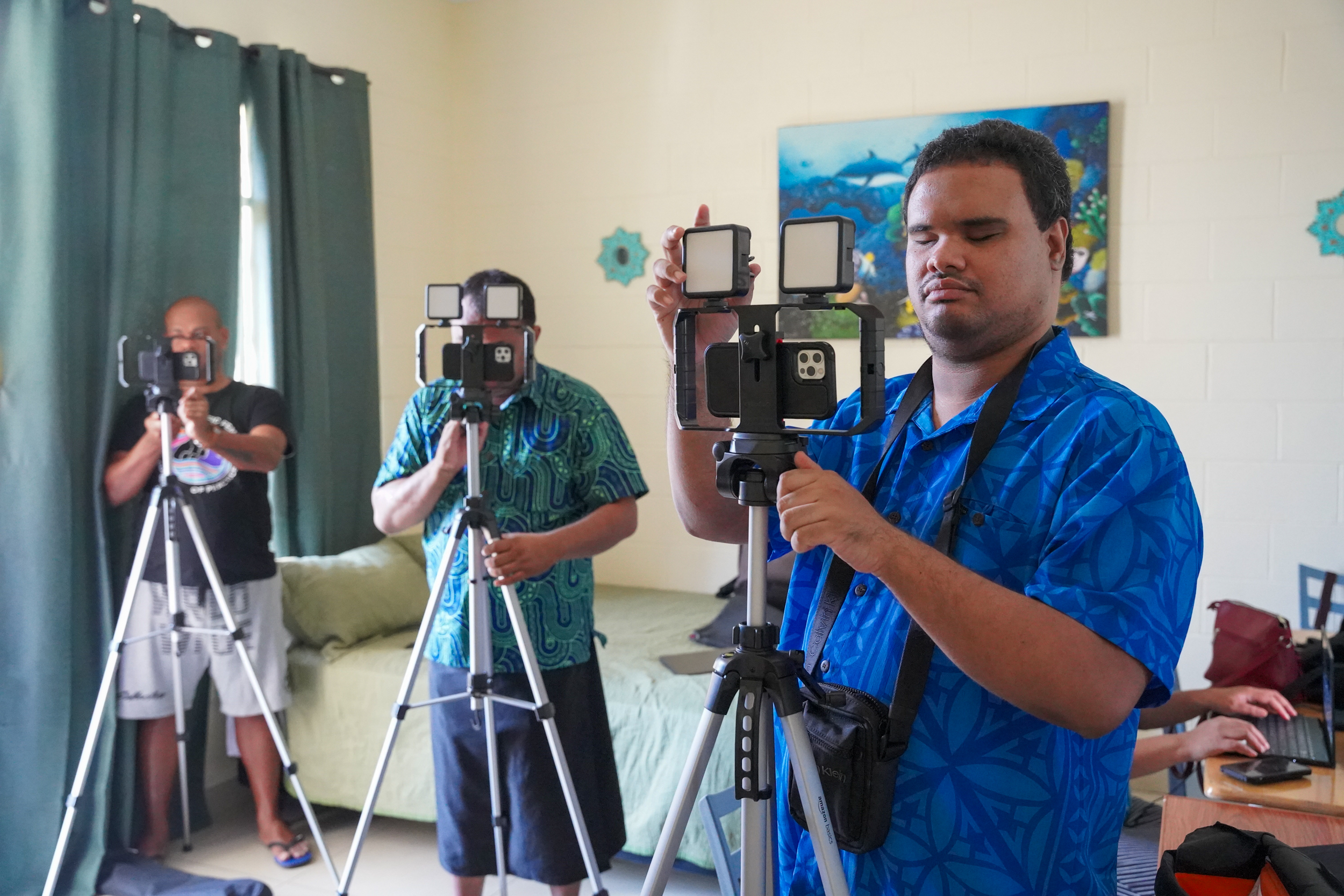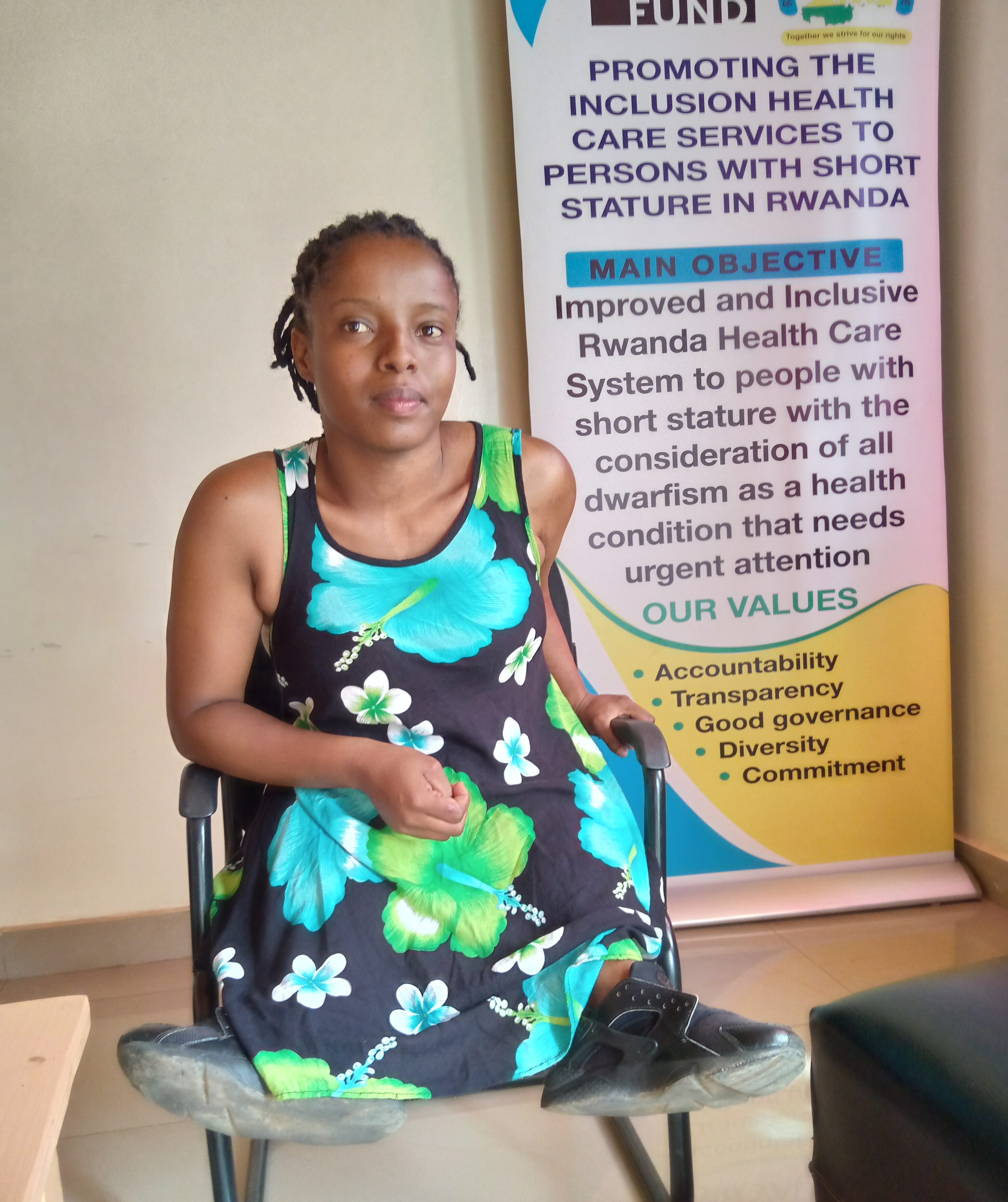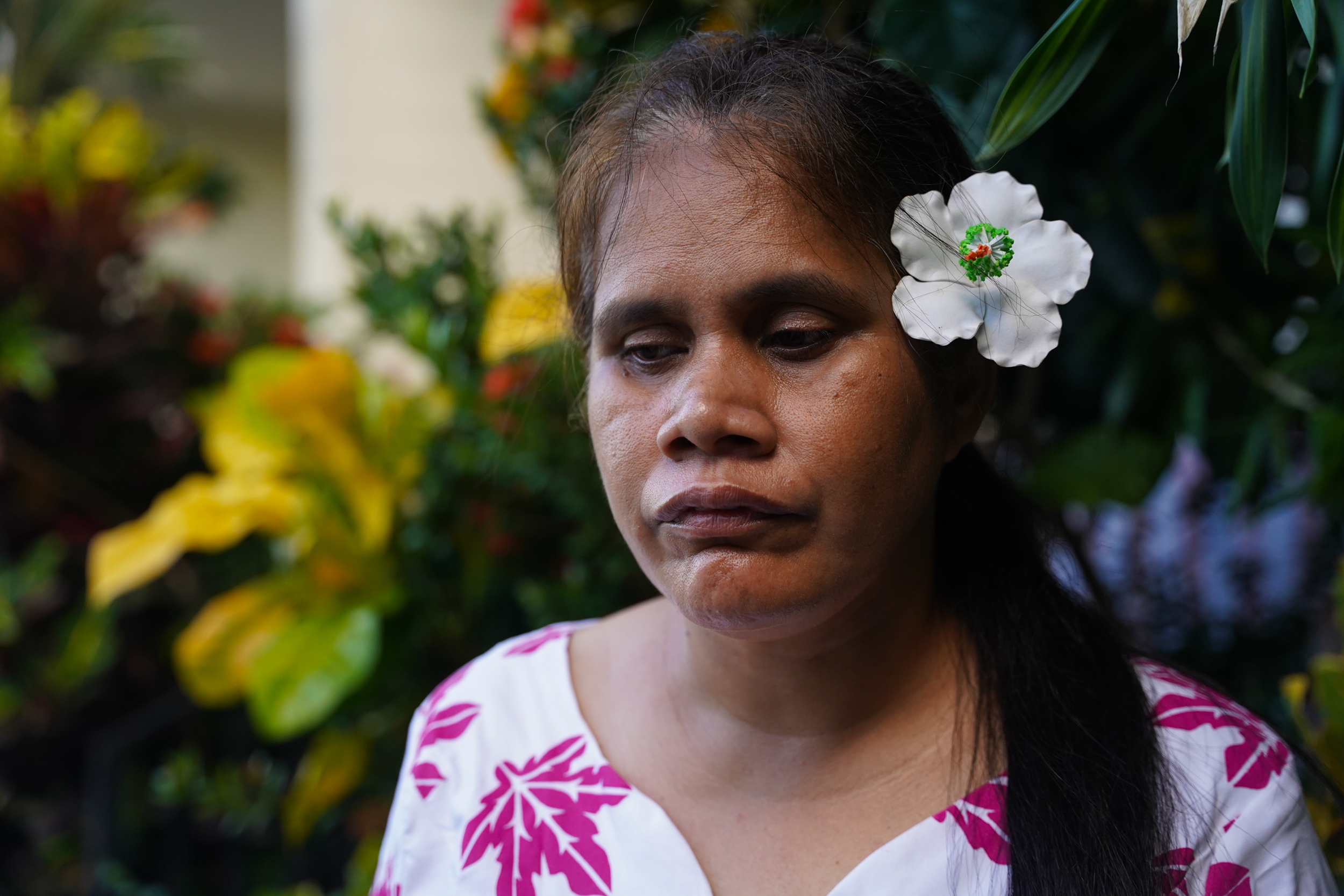
News
Inclusive Justice
Making Society Fair, Just and Equitable for Indigenous Women with Disabilities in Nepal
December 31, 2023
KATHMANDU, Nepal – There are 700,000 Indigenous women and girls with disabilities in Nepal. Violence against this group is rife and has deepened since the COVID-19 pandemic. A 2022 study reports that negative beliefs about disability and a lack of awareness about the rights of Indigenous women and persons with disabilities in Nepal are some of the reasons why they are at a high risk of violence.
DJP Fellow Bhawana Majhi interviews Pratima Gurung, an internationally renowned disability rights activist and the president of the National Indigenous Disabled Women Association – Nepal (NIDWAN), to dig deeper into these issues and how NIDWAN is addressing them.
Question: What inspired you to establish NIDWAN?
Answer: NIDWAN was established in 2015, after the post-earthquake situation, when adolescent Indigenous girls and women with disabilities had to face discrimination and violence that arose within the private and the public spheres. They had to spend [nearly] nine months in an open space and face different kinds of violence, such as domestic violence, language-based violence, economic and cultural violence [because their rights are not recognized by the state]. In education, civil services and other official work, Indigenous languages are not recognized. Indigenous women are insulted for their attire and denied their traditional livelihoods by imposing restrictions on them and criminalizing their occupations. Name-calling, insulting, harassment and stereotyping on the basis of their physical and ethnic attributes are common.
NIDWAN was established with a mission to unite young Indigenous women and girls with disabilities to make society fair, just and equitable for them.
Question: How does NIDWAN contribute to raising awareness among individuals with disabilities about their rights?
Answer: We primarily work at three levels. The first one is reaching an individual through membership. The second strategy is that we have our movement at the provincial level to work within the seven provinces of Nepal. And this is where the grassroots women, including Indigenous peoples with disabilities, can be part of those provincial networks. At the federal level also, we have those structures. And within these three structures, we try to reach Indigenous people and women with disabilities through membership, by building their capacity, by bringing them to the public domain and [making them aware] of their rights. We try to sensitize and [make them aware of] the rights of Indigenous peoples, on the United Nations Convention on the Rights of Persons with Disabilities (UNCRPD), on the rights of Indigenous persons with disabilities related [to] the UN Declaration on the Rights of Indigenous Peoples, and UNDRIP (United Nations Declaration on the Rights of Indigenous Peoples). So, with these international instruments which Nepal has already ratified, we collectively build and create a very conducive and enabling space so they can express the challenges that they face in their day-to-day lives. And this is where we try to connect with them and amplify their voices.
Question: What are the challenges faced by people with various types of disabilities in Nepal?
Answer: If you look at the data in Nepal, people with disabilities comprise 2.2 percent of the total population. The fundamental challenge that [they] are facing is access [to] fundamental rights. We also find challenges related with disaggregated data, information, violence and discrimination. Access to justice and access to government services are major challenges. [In the recent past] they have also been facing challenges [because of] climate change disasters. Challenges related to lack of resources, data information, academic research and also the regular policy and advocacy from the organizations of people with disabilities (OPDs), meaningful participation and engagement of people with disabilities in decision making also [exist].
Question: What efforts has NIDWAN put in to address these challenges and create positive change?
Answer: NIDWAN has been working at the grassroots level, [which] is related [to] movement building. We have been working with OPDs, Indigenous peoples’ organizations, women’s organizations, [nationally] and in the states. We are also working with the UN agencies. We are generating evidence-based advocacy related [to] the lived experience of Indigenous peoples with disabilities. We are also working in different thematic areas that are related with environmental disaster, inclusive education, right to health, right to employment and other kinds of access and services.
Question: What are NIDWAN’s future plans?
Answer: NIDWAN’s future plans involve reaching more people, building capacity and empowering Indigenous women and girls with disabilities. We aim to address challenges like violence and discrimination while focusing on areas such as disaster resilience, education, healthcare and employment opportunities. Our ultimate goal is to create positive change by persisting in lobbying and advocacy efforts at local and provincial levels.
DJP Fellow Bhawana Majhi is an intern at the National Indigenous Disabled Women Association – Nepal (NIDWAN) and is actively engaged in contributing to national-level meetings, workshops, and training sessions on behalf of the organization.
News From the Global Frontlines of Disability Justice

Rwanda’s Marburg Crisis
As Rwanda confronts its first-ever Marburg virus outbreak, people with disabilities face heightened risks — not only from the virus but also from the lack of accessible health information. “Without proper accommodations, such as sign language interpreters, captions, Braille, or visual aids, the Deaf and DeafBlind community may miss crucial information about how to protect themselves, symptoms to watch for, or where to seek help in case of infection,” says Joseph Musabyimana, executive director of the Rwanda Organization of Persons with Deaf Blindness.

Capturing Vision Through Sound and Touch
Last summer, the DJP trained Indigenous activists with disabilities from the Pacific on the iPhone camera to create a documentary series on disability and climate change. With VoiceOver, the iPhone provides image descriptions for blind and low-vision filmmakers and offers other accessible features. “If you think about it, it doesn’t make sense for a blind person to use a camera,” says DJP filmmaker Ari Hazelman. “The iPhone gives you more avenues to tell your story in a more profound way as a blind person.”

Work for All
The We Can Work program equips young Rwandans with disabilities to navigate barriers to employment through education, vocational training, and soft skills development. By fostering inclusive workplaces and advocating for policy changes, the program aims to reduce poverty and promote economic independence. Participants like Alliance Ukwishaka are optimistic that the program will enable them to achieve their dreams and showcase their potential. The initiative is part of a larger effort to support 30 million disabled youth across seven African countries.

Global Recognition
Faaolo Utumapu-Utailesolo’s film “Dramatic Waves of Change” has been named a finalist in the Focus on Ability International Short Film Festival. The film, completed during a Disability Justice Project workshop in Samoa, highlights the impact of climate change on people with disabilities in Kiribati. Utumapu-Utailesolo, who is blind, used an iPhone with accessibility features to create the film. “Do not leave people with disabilities behind when [you] plan, implement, and monitor programs regarding climate change and disaster,” she says. Her achievement is a testament to the power of inclusive filmmaking.

Advancing Democracy
Rwanda has made significant progress in making its elections more accessible, highlighted by the July 15 general elections where notable accommodations were provided. This was a major step forward in disabled Rwandans’ quest for equal rights and participation. “You cannot imagine how happy I am, for I have voted by myself and privately as others do accessibly,” says Jean Marie Vianney Mukeshimana, who used a Braille voting slate for the first time. “Voting is a deeply emotional and meaningful experience for a person with any disability in Rwanda, reflecting a blend of pride, empowerment, and hope.”

Barriers to the Ballot
Despite legislation like the Americans with Disabilities Act, barriers at the polls still hinder — and often prevent — people with disabilities from voting. New restrictive laws in some states, such as criminalizing assistance with voting, exacerbate these issues. Advocacy groups continue to fight for improved accessibility and increased voter turnout among disabled individuals, emphasizing the need for multiple voting options to accommodate diverse needs. ““Of course, we want to vote,” says Claire Stanley with the American Council of the Blind, “but if you can’t, you can’t.”